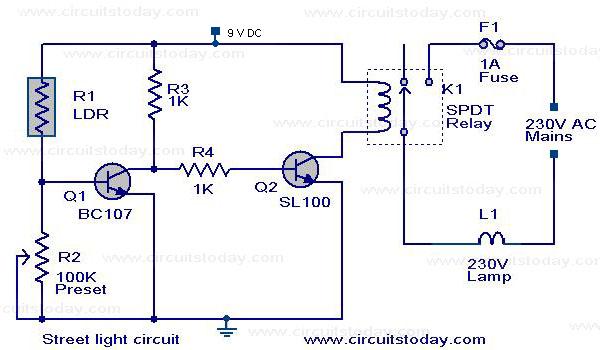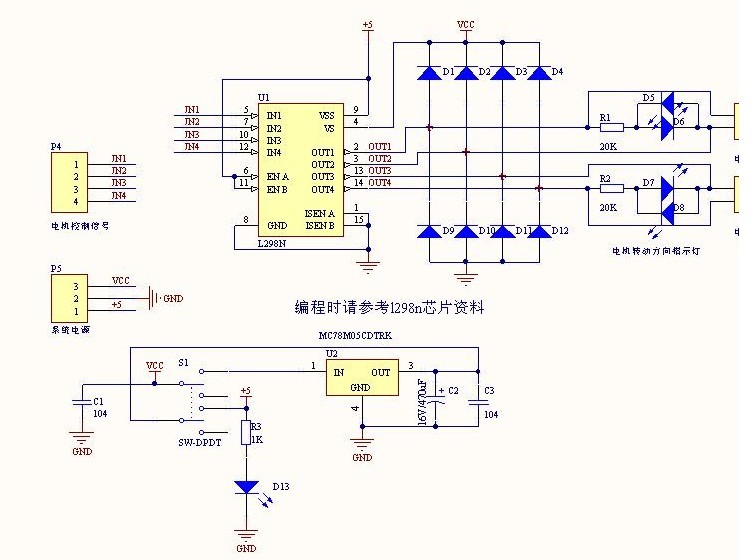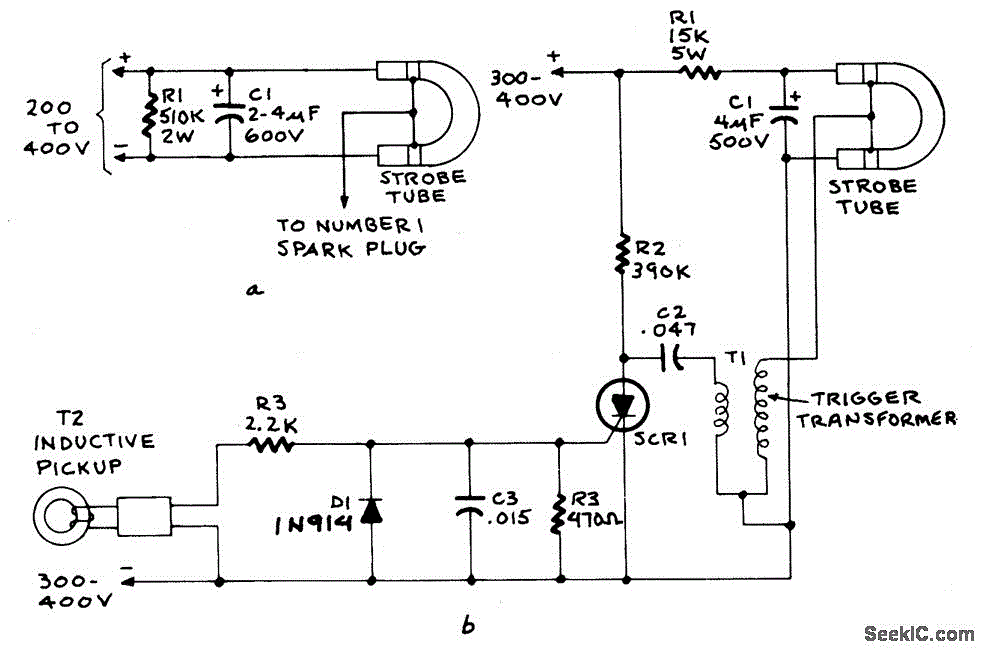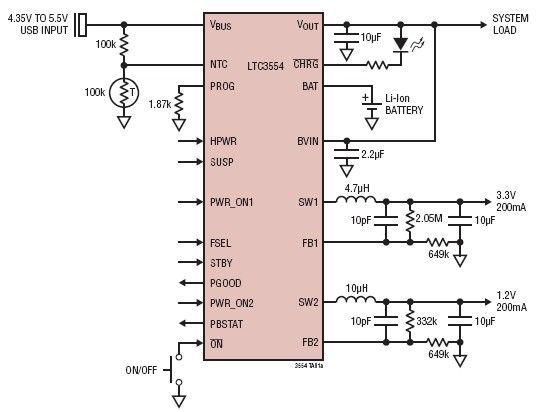
Automatic Street Light Controller Circuit Using Relays and LDR

The circuit diagram of an Automatic Street Light Controller Circuit is explained in this post.
The Automatic Street Light Controller Circuit is designed to automatically turn on street lights at dusk and turn them off at dawn. This functionality is achieved using a light-dependent resistor (LDR) as the primary sensor. The LDR detects ambient light levels; when the light falls below a certain threshold, the resistance of the LDR decreases, triggering a transistor that activates the street light.
The circuit typically consists of the following components: an LDR, a resistor for voltage division, a transistor (commonly an NPN type), and a relay to control the high voltage of the street light. The LDR is connected in a voltage divider configuration with a fixed resistor, creating a voltage that varies with light intensity. This voltage is fed into the base of the transistor, which acts as a switch.
When the ambient light level decreases, the voltage across the LDR and resistor combination drops, allowing the transistor to turn on. This, in turn, energizes the relay, closing its contacts and powering the street light. Conversely, when the light levels increase at dawn, the LDR's resistance increases, causing the transistor to turn off and deactivating the relay, thus turning off the street light.
The circuit can also include additional features such as time delay circuits or dimming capabilities to enhance functionality. Overall, the Automatic Street Light Controller Circuit is an efficient solution for managing outdoor lighting, reducing energy consumption, and improving street safety.The circuit diagram of an Automatic Street Light Controller Circuit is explained in this post.. 🔗 External reference
The Automatic Street Light Controller Circuit is designed to automatically turn on street lights at dusk and turn them off at dawn. This functionality is achieved using a light-dependent resistor (LDR) as the primary sensor. The LDR detects ambient light levels; when the light falls below a certain threshold, the resistance of the LDR decreases, triggering a transistor that activates the street light.
The circuit typically consists of the following components: an LDR, a resistor for voltage division, a transistor (commonly an NPN type), and a relay to control the high voltage of the street light. The LDR is connected in a voltage divider configuration with a fixed resistor, creating a voltage that varies with light intensity. This voltage is fed into the base of the transistor, which acts as a switch.
When the ambient light level decreases, the voltage across the LDR and resistor combination drops, allowing the transistor to turn on. This, in turn, energizes the relay, closing its contacts and powering the street light. Conversely, when the light levels increase at dawn, the LDR's resistance increases, causing the transistor to turn off and deactivating the relay, thus turning off the street light.
The circuit can also include additional features such as time delay circuits or dimming capabilities to enhance functionality. Overall, the Automatic Street Light Controller Circuit is an efficient solution for managing outdoor lighting, reducing energy consumption, and improving street safety.The circuit diagram of an Automatic Street Light Controller Circuit is explained in this post.. 🔗 External reference





